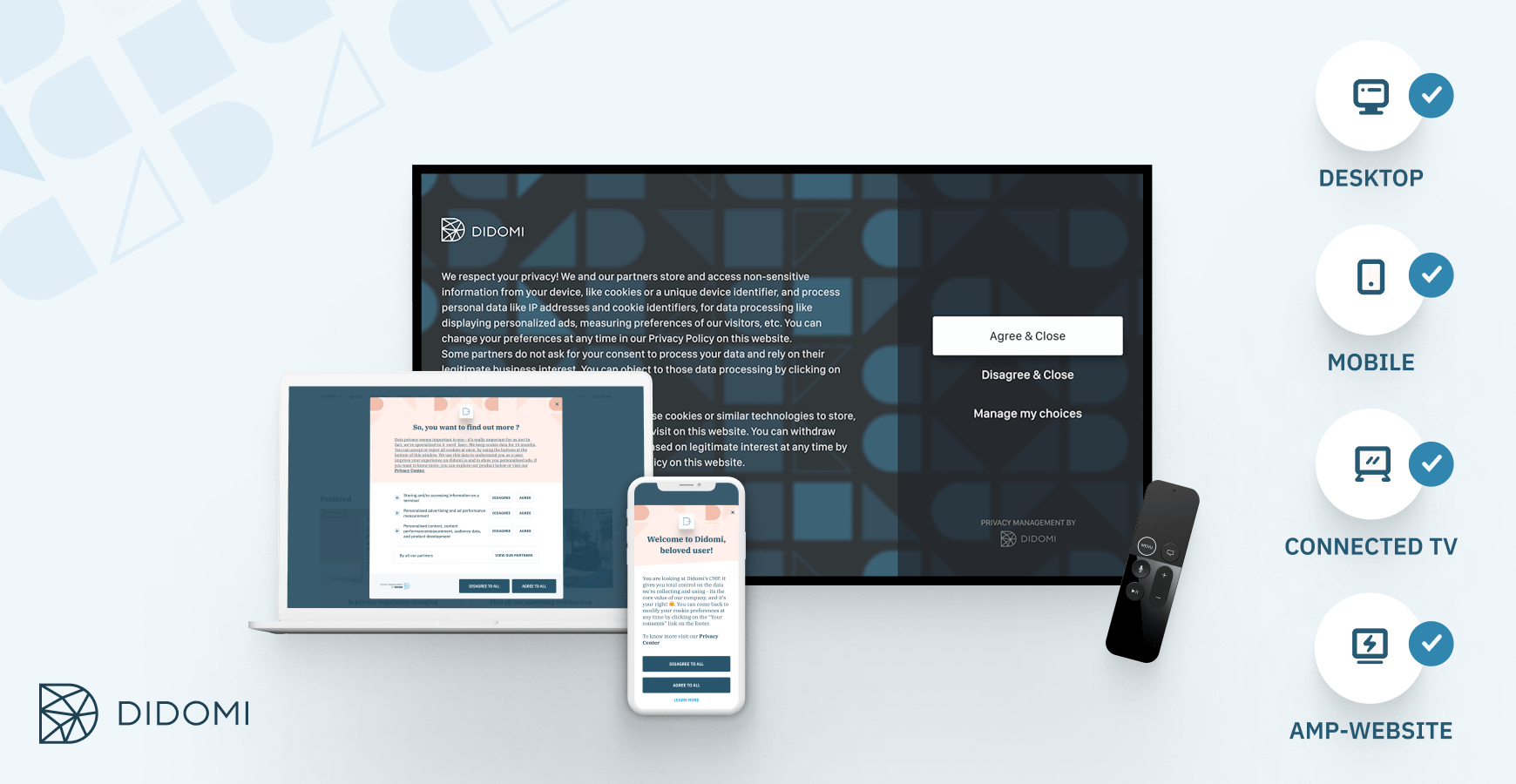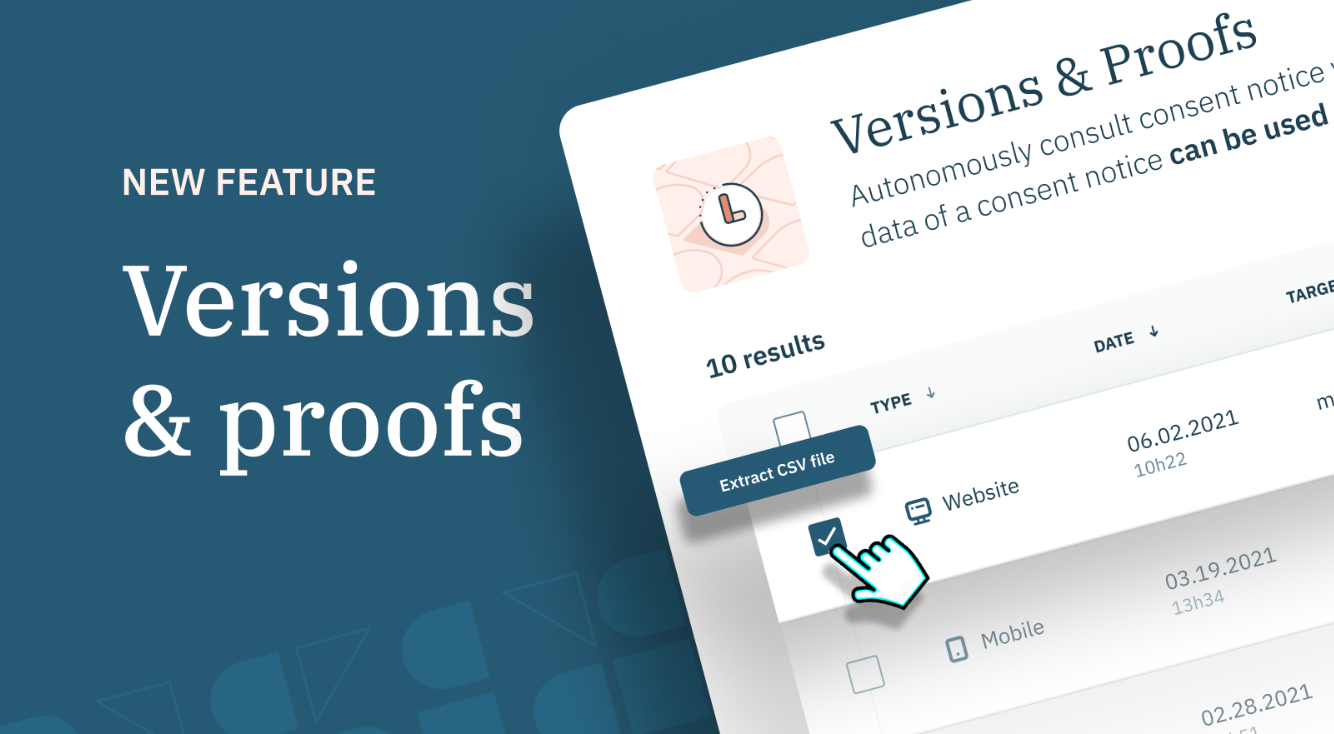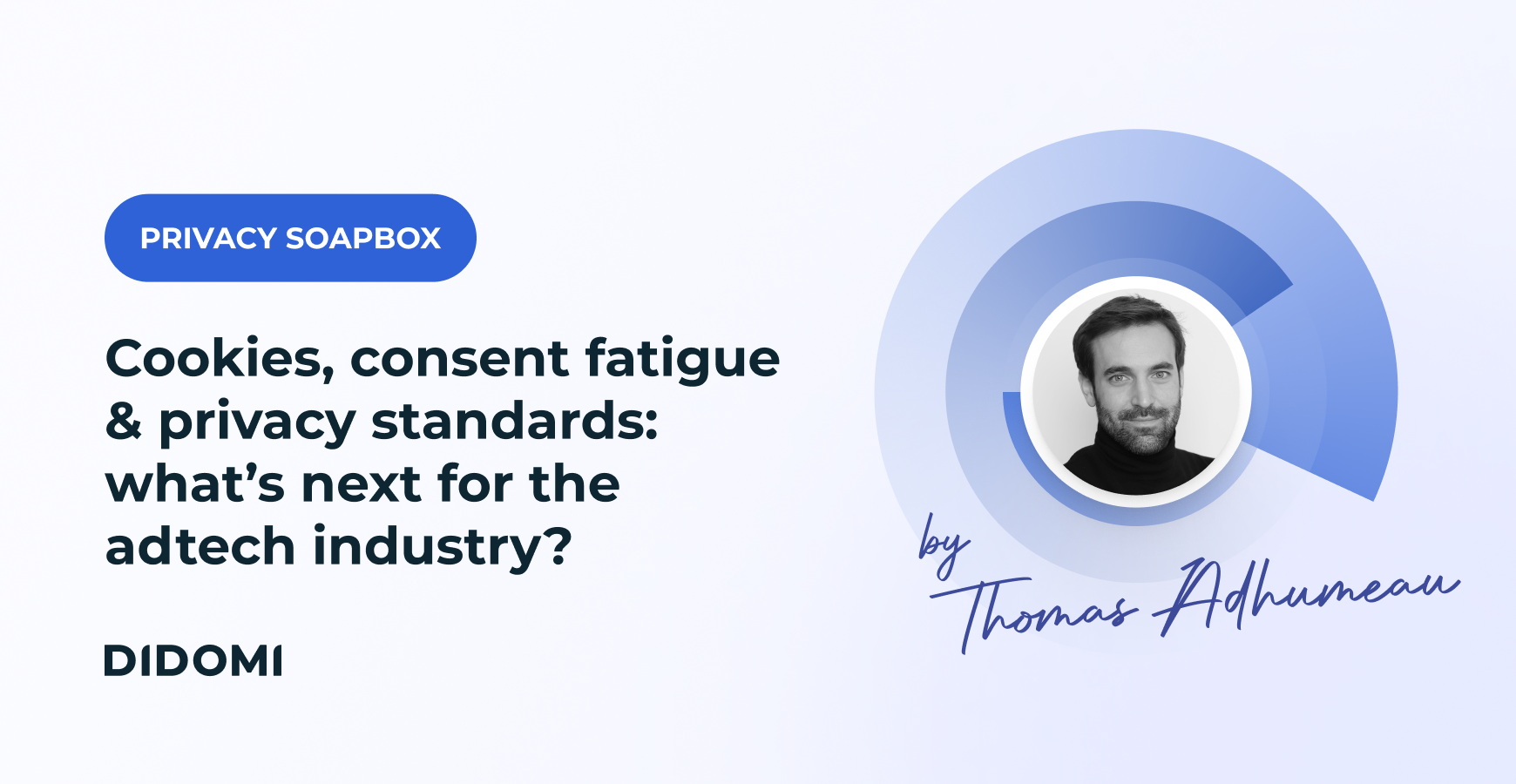Didomi is proud to announce our newest premium feature: cross-device! Before, users were unable to share consent across devices. This resulted in consent fatigue and low consent rates. Now, the Didomi cross-device feature allows for a unified experience across devices, allowing user choices to be shared across multiple websites and apps.
What are the benefits of this new feature? And how can it be implemented? Carry on reading for more information.
Summary :
Why is there a need for cross-device?
You land on a company website page and see a consent banner. You make your consent choice. You then land on the app of that company. You make your consent choice again. Every time you land on this website/app you have to make your consent choice. It’s frustrating. This is called consent fatigue.
The explosion of cookie consent pop ups started in 2018, largely due to the GDPR which seeks to give users control over their personal data. It states that personal data collection must have a form of legal basis, such as user consent.
However, there is a real disconnect between compliance with privacy regulation, operationalized through complex long-form texts and pop ups, and understanding of what actually happens with our data. A regulation that sought to promote a more citizen-led data industry has, for many, resulted in consent fatigue.
Consent fatigue is a concern for both the end user and the company in question.
From a user perspective, it’s just bad UX. Continuous hurdles to the user journey are an annoyance, especially when they come in the format of disruptive pop-ins, blocking access to the website/app.
From a company perspective, consent fatigue can be damaging for business. User frustration and a disrupted user journey can lead to a higher bounce rate.
Moreover, frustrated users are more likely to decline the cookie notice, which leads to a loss in consent. A lower consent rate has a direct impact on analytics, AB testing, retargeting and monetization strategies.
Put simply, it’s a lose-lose situation.
Wouldn’t it be easier to unify user experience? To share consent across devices, so a user would have to make their consent choice once and only once?
This functionality is what we call cross-device.
.png?width=1740&name=Blog-hero-580x300-crossdevices-DE%20(1).png)
How does cross-device work?
The Didomi cross-device premium feature allows user choices to be shared across multiple websites and apps, whether on the same device or across multiple devices. It applies to users that have an account with the company in question and are logged in. In this way, clients can provide a stable user identifier across the user journey.
From a user point of view, this is the journey:
-
User logs in then gives consent (whether positive or negative) on a website or mobile app on device A.
-
User goes to another device (device B), launches a website or mobile app and logs in.
-
Consent is not recollected on device B as it was already collected on device A. Choices from device A are applied automatically to device B.
And, at a higher level, this is how the cross-device functionality works:
-
The website/app shares a user identifier with Didomi (email, anonymous ID, etc.).
-
When the user makes a choice on the Didomi Consent Management Platform, the status is stored on Didomi’s servers.
-
The next time the identified user lands on the website/app, the status is pulled from Didomi’s servers and used. There is no need to ask the user for their choice again.
What are the benefits of cross-device?
The advantages of cross-device are bidirectional, both users and companies stand to benefit. Most importantly, users are able to enjoy the GDPR data rights they deserve, but in a way that reduces friction and boosts user experience.
And, for companies, syncing user choices in this way allows them to:
-
Improve customer experience: By sharing consent choices across all websites/apps, the user is asked for consent less often. User experience is improved, whilst still ensuring the user has the data rights they deserve.
-
Improve monetization: By sharing consent choices across all websites/apps, consent is more readily available. This leads to a higher effective consent rate and a higher average CPM/revenue.
-
Decrease bounce rate: By displaying the banner less often, you avoid losing visitors due to annoyance and consent fatigue.
How can Didomi clients integrate the cross-device feature?
Cross-device is a premium feature for Didomi clients that can be activated in the Didomi Console. Didomi customers can reach out to their Customer Success Manager to activate the cross-device functionality.
At Didomi, we believe that syncing user choices marks the future of consent collection. Users are in control of their data, but in a way that does not hamper their online experience or cause consent fatigue. Companies are GDPR compliant, but able to optimise their consent rates and monetization strategies.
If you are not yet a Didomi client, but are interested in finding out more about this feature (and any others!) then please schedule a call with us, we’d love to discuss!







